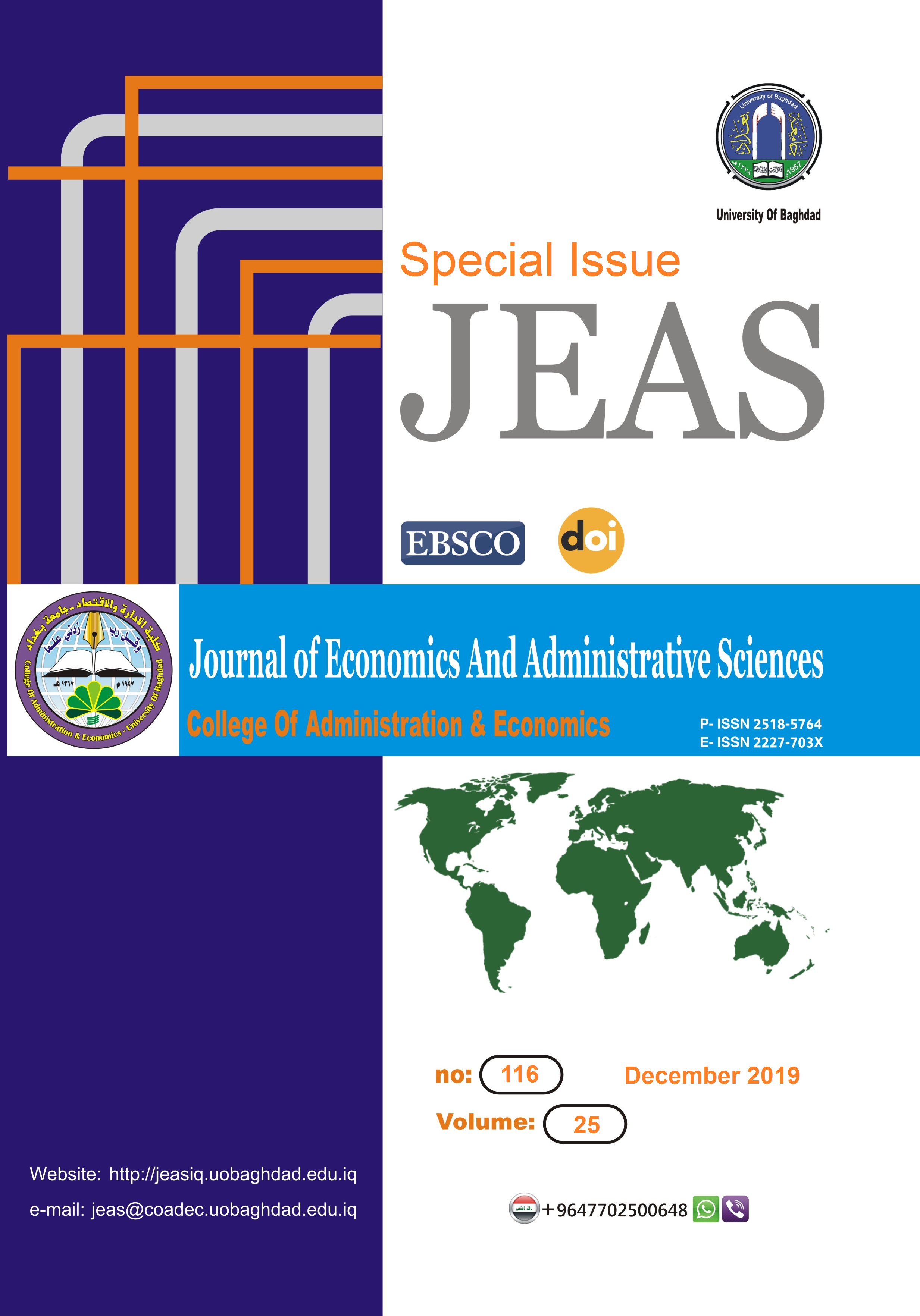The quality of work-life and relation to organizational excellence at King Khalid University of the faculty members' point of view / Business School Case study
DOI:
https://doi.org/10.33095/jeas.v25i116.1788Keywords:
: Quality of career - Organizational excellence - Participation in decision making - Excellence of the strategy- Excellence of leadership - Balancing personal life and work.Abstract
This study aimed to identify the quality of the career path and its relation to organizational excellence at King Khalid University in the Faculty of Business from the point of view of the faculty members by identifying the dimensions quality of work-life including (participation of decision making, training and development opportunities, and the balance between personal and work life, and to identify the level of organizational excellence through dimensions ( Excellence of leadership, excellence of the strategy, and excellence of organizational culture). The descriptive approach was used. The questionnaire was a research tool. It consisted of (29) paragraphs, distributed to the entire study community and then received 127 responses. The results of the study showed that the level of quality of career life is generally average, while training and development came in the first order, followed by the quality of participation in decision making, while the balance between work and personal life ranked last. The level of organizational excellence was generally high. Excellence in organizational culture was in the first order, followed by strategic excellence, and finally leadership excellence. The study showed a statistically significant relationship between the total degree of quality of the functional life and all dimensions of the organizational excellence variable. Finally, the study recommended that the faculty members should participate more, adopt training programs, pay attention to leadership methods that stimulate work and production, attract the distinguished human resources, the need to provide the quality of work life.
Downloads
Published
Issue
Section
License
Articles submitted to the journal should not have been published before in their current or substantially similar form or be under consideration for publication with another journal. Please see JEAS originality guidelines for details. Use this in conjunction with the points below about references, before submission i.e. always attribute clearly using either indented text or quote marks as well as making use of the preferred Harvard style of formatting. Authors submitting articles for publication warrant that the work is not an infringement of any existing copyright and will indemnify the publisher against any breach of such warranty. For ease of dissemination and to ensure proper policing of use, papers and contributions become the legal copyright of the publisher unless otherwise agreed.
The editor may make use of Turtitin software for checking the originality of submissions received.


























